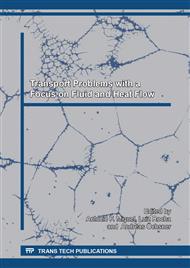p.83
p.108
p.124
p.133
p.140
p.149
p.157
p.166
p.171
Effect of Entrainment Ratio and Subcooling Degree on Dual System of Cooling-Thermal Energy Conversion Applying Ejector
Abstract:
This study proposes a system called 'dual system of cooling-thermal energy conversion applying ejector', which practically applies an ejector to an ocean thermal energy conversion (OTEC) system. The proposed system presents higher system efficiency, owing to the application of an ejector, and reduced initial and operating costs. The main results, obtained from simulation analysis, are as follows: the cooling capacity tended to decrease as the entrainment ratio increased, and the system using R134a generally presented the highest cooling capacity and COP. In terms of generation system, the highest turbine gross power was obtained when the R134a working fluid was applied. The efficiency of the system decreased as the entrainment ratio increased. Finally, the application of the ejector enhanced the efficiency of the generation system, using R134a, by approximately 50%, from 4.73% to 7.10% at the entrainment ratio of 0.1.
Info:
Periodical:
Pages:
140-148
Citation:
Online since:
November 2017
Price:
Сopyright:
© 2017 Trans Tech Publications Ltd. All Rights Reserved
Share:
Citation:


